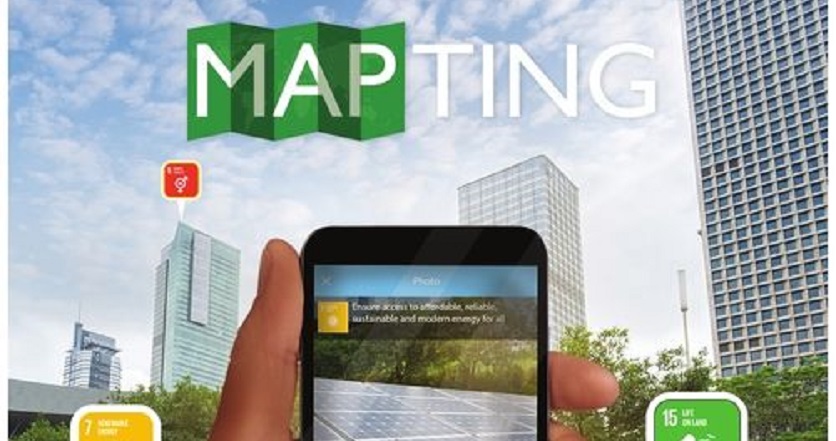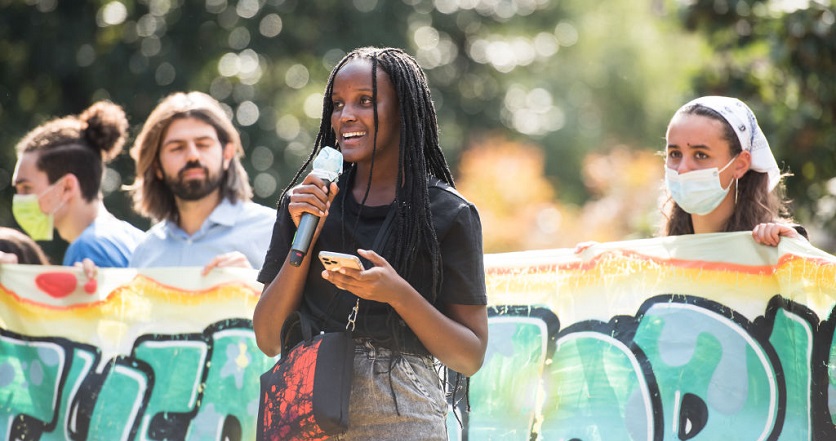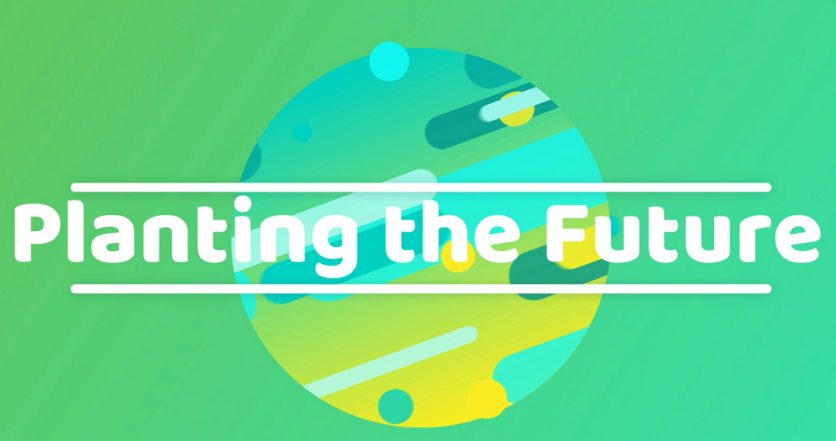A Blueprint for Hope: Mirian Vilela on the Earth Charter’s Vision for a Thriving and Sustainable Future
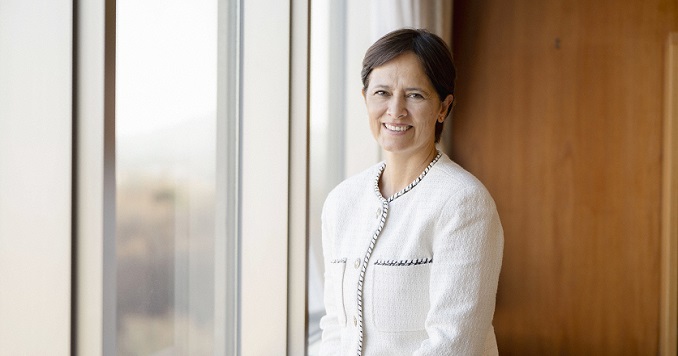
Mirian Vilela, executive director of the Earth Charter International (ECI) and leading voice in the global movement toward a sustainable future, reflects on why we can be hopeful and why the Earth Charter is crucial to driving global change. After working at the United Nations Secretariat, she played a pivotal role in the establishment of the ECI in the 1990s. Dr. Vilela holds a master’s degree in public administration from Harvard Kennedy School in Massachusetts, USA, and a doctorate in education from La Salle University in Costa Rica.
The Road to the Earth Charter: Pioneering Global Ethical Principles
The Earth Charter, which consists of sixteen principles and four pillars—(1) respect and care for the community of life, (2) ecological integrity, (3) social and economic justice, and (4) democracy, nonviolence and peace—is widely considered to be the starting point, or the ethical foundation, for the Sustainable Development Goals (SDGs), due to its content and the process of its establishment. Dr. Vilela, you played a coordinating role in the development of the Earth Charter. Can you tell us about your experience in this process?
Yes, in 1992, the United Nations Conference on Environment and Development (Earth Summit) was held in Brazil. The Earth Charter was part of the preparatory process for the summit, as a consultation to clarify which values and principles should be part of the Earth Charter was initiated around that time. But agreement on this could not be reached within the intergovernmental sphere. After the Earth Summit, and several years of deliberations, the Earth Charter was launched as a people’s document and as a comprehensive declaration of ethical principles for humans and societies.
At the age of 21, I started working for the United Nations and was involved in the preparations for the Earth Summit. Later, I was fortunate to join the new phase of the Earth Charter Initiative and had the opportunity to work directly with some of the world’s leaders, including Maurice Strong, who served as Secretary General of the Summit, and Mikhail Gorbachev, former president of the Soviet Union.
After the collapse of the Soviet Union, Gorbachev felt that a moral compass for humanity was essential, and Strong also believed that a set of values and principles was needed to serve as a map to the future. He considered the Earth Charter as one of the unfinished businesses of the Earth Summit. Both were acutely aware of the limitations of intergovernmental negotiations between nations, given the strong national interests driving countries’ positions and therefore believed in the value of a people’s process to create such a moral compass—a vision of governance that was quite new 30 years ago.
Therefore, the Earth Charter idea emerged out of the United Nations, but it has evolved beyond the confines of the UN into a movement in which people from all over the world were invited to participate. It offers a strong message of hope and encourages action from the contexts in which we live.
I see the Earth Charter as an instrument, like a compass. We use a compass to help give us direction when we want to know where we are and where we want to go. If we think about an ethical compass, it is a tool to help us think through the decisions we make, the consequences they may generate and the kind of footprint we want to leave on our path here.
The Earth Charter builds on the Rio Declaration, adopted at the Rio Earth Summit, and many other international conventions. If the SDGs are the building blocks, the Earth Charter is the foundation. It articulates principles for action to achieve the goals for a sustainable future.
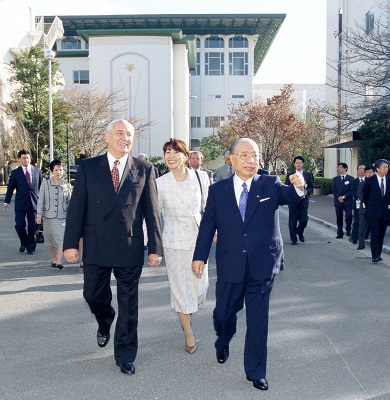
The Earth Charter invites us to feel part of the global community and for everyone to share responsibility for the present and future well-being of the human family and the larger living world. As we move forward in taking concrete action within our local contexts, it is essential to broaden our perspective as global citizens. It is important to recognize our “blind spots” in terms of how we see the world. We may recognize that our vision is often narrow, and with that, misunderstandings arise. That is why, through encounters and dialogues with people from diverse cultures and backgrounds, we can break down such preconceived notions.
The Creation of a People’s Charter
When he spoke at the launch of the Earth Charter on June 29, 2000, former president Gorbachev stated, “During almost fifty years in politics I have had to sign a lot of documents and the Earth Charter is above everything I have signed so far.” He went on to say that the main difference between the charter and other documents is that it is the “result of the work . . . not just of one group of people, it is the result of the thoughts, hopes and dreams of thousands and thousands even of millions of people.” How did the Earth Charter become a “people’s charter”? And what was the contribution of SGI President Daisaku Ikeda?
Daisaku Ikeda was instrumental in contributing to the drafting process of the Earth Charter. He provided valuable advice on the draft, but more importantly, through his own practice of dialogue, he demonstrated the spirit of bonding and working together with people of all cultural backgrounds.
The Earth Charter encourages dialogue among civilizations, not only during its consultation and drafting process, but also in the various ways it can be used and interpreted. During the drafting and consultation process, experts from various disciplines and people from cultures all over the world were earnestly dialoguing and exchanging views, not only on the values and principles that should be part of the Earth Charter, but also on the right wording and tone it should have. Grassroots opinions were solicited, and the Charter was refined over time. I witnessed the discussions up close, and I remember marveling at the way these world giants pondered over each word and spent years reconciling their opinions. I recall working with the people of SGI (Soka Gakkai International) at that time, traveling to Asian countries to raise awareness and engage people in this process, as well as to exchange views and ideas so as not to be biased toward Western thinking.
One of the driving forces behind the Earth Charter becoming a compass for all people is Dr. Ikeda’s firm belief that solidarity can transcend fields, generations and ideologies.
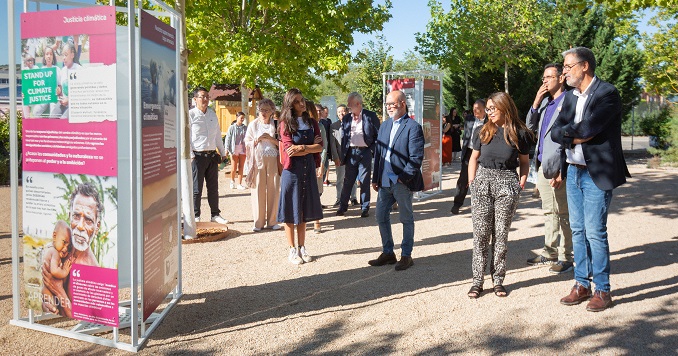
Requirements for Global Citizenship
You spoke at Soka University’s graduation ceremony in Japan in March 2024, and made a reference to President Ikeda’s 1996 lecture at Columbia University. You emphasized the qualities required for global citizenship that were outlined by him in that speech: (1) The wisdom to perceive the interconnectedness of all life, (2) The courage not to fear or deny difference but to respect and strive to understand people of different cultures and to grow from encounters with them, and (3) The compassion to maintain an imaginative empathy that reaches beyond one’s immediate surroundings and extends to those suffering in distant places.
How can promoting curiosity and dialogue across different cultural and religious backgrounds contribute to building bridges and fostering the culture of peace?
Two areas of Dr. Ikeda’s thought that particularly interest me are his promotion of interreligious dialogue and positive actions to inspire young people. This is very much in line with the work we have been doing at Earth Charter International for nearly three decades. Having been in various dialogue settings and observing Dr. Ikeda’s life, I believe that curiosity is the key to building bridges.
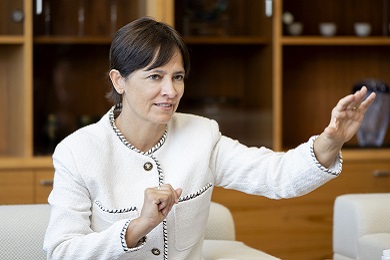
There is a passage in the Earth Charter that states, “When basic needs have been met, human development is primarily about being more, not having more.” In this regard, what I understand from Dr. Ikeda’s philosophy of self-improvement, or “human revolution,” is that our own improvement and growth must be accompanied by dialogue with others and contribution to our surroundings. This philosophy of human revolution has much in common with the spirit of the Earth Charter. The Earth Charter emphasizes the importance of our responsibility for the well-being of future generations; this involves the recognition of Earth as a single living organism that transcends national boundaries, cultures and generations.
Dr. Ikeda has spread throughout the world a sense of life in which all things are interrelated and dependent on each other; this is the basis of a culture of peace. We can find a similar view in the Earth Charter and also in other philosophies like the idea of Ubuntu in Africa that indicates “I am because you are.”
I am that kind of person who enjoys meeting and talking with people from diverse cultures, who is curious to learn about them and who enjoys building bridges across cultures. I believe that when we connect with others and learn about them and their contexts, through dialogue, it becomes easier to understand our interconnectedness, live in peace with others and appreciate the world around us. This is like the philosophy and practice of human revolution.
Believing in the Future
How can we encourage people, especially youth, to overcome feelings of indifference, resigination and apathy in the face of global challenges?
We are living in a time of transformation. There are so many possibilities. Can we change the current situation and envision a different future? There is a fierce struggle going on between the possible and the impossible, and people’s thinking on this seems to be polarized.
On the one hand, there are those who are frustrated with reality and think the world can’t possibly get better. The fact is, there are good reasons to live with a sense of despair and disbelief. On the other hand, there are those who say, “Despite the challenges, and the fact that we’re not there yet, we will not give up hope. We can generate major social transformations. There is no other option but to believe that another world is possible, and work toward that.”
Looking at the news, it seems that all we hear about are crises, such as wars, poverty and climate change, indeed, this is part of reality, but I believe that there are also many good things happening, and positive changes are beginning to occur as well. For example, nowadays, a single piece of information can be communicated with a volume and speed that would have been unmatched half a century ago. Instead of being swept away by the waves of despair, we should turn our eyes to the hope that shines in the darkness and continue on the path we should walk. It is a choice we can make, to believe that change is possible or not.
There are more people aware, concerned and willing to contribute to the betterment of societies than ever before in history because of this new access to information and communication. I think we should celebrate this fact. I believe we are in the midst of a paradigm shift in terms of peoples’ level of consciousness about our interdependence with the larger living world. I see huge possibilities for change toward creating a more caring world and making a big shift or revolution in human consciousness.
There is no doubt that there are countless challenges and issues that need to be addressed and changed in our world. But I believe—or we can choose to believe, in the latent power of humanity to do good and generate change. As Dr. Ikeda has urged, we can surely bring about a revolution in consciousness. Slavery had existed in Brazil for more than 300 years. That was considered normal or acceptable; it was a major element of the country’s economy. But a group of people questioned that narrative and decided to put an end to it. It was people who raised their voices for change. This resolve, solidarity and enthusiasm overturned both resignation and helplessness.
There is always something that any person can do to contribute to a more just, sustainable and peaceful planet for the next generation. It could be as simple as smiling at your neighbors. No matter how small the drop is, it will ripple and spread. Our drop of hope and positive action will become a ripple of joy, and one day, it will surely flourish.
Adapted from an article in the April 18, 2024, issue of Seikyo Shimbun, Soka Gakkai, Japan.





